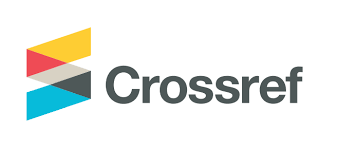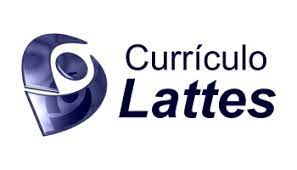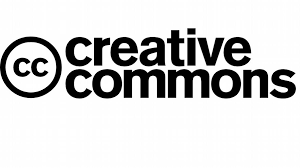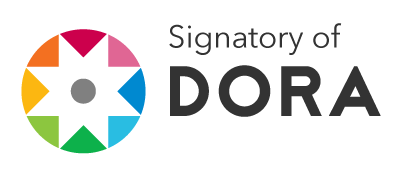Comportamento autolesivo na adolescência
fatores de risco e proteção sob a perspectiva da teoria bioecológica de Bronfenbrenner
DOI:
https://doi.org/10.47456/rbps.v27isupl_1.48242%20Palavras-chave:
Autolesão, Adolescência, Fatores de risco, Fatores de proteção, Sistemas ecológicosResumo
Introdução: O comportamento autolesivo (CAL) em adolescentes é reconhecido globalmente como um grave problema de saúde pública que demanda atenção constante, por estar associado a doenças psiquiátricas e maior probabilidade de suicídio futuro. Identificar os fatores de risco e proteção é fundamental para conter o avanço desse fenômeno e desenvolver estratégias de enfrentamento mais eficazes. Além disso, compreender os vários aspectos biopsicossociais que influenciam a manutenção desse tipo de violência autoprovocada pode ser de extrema importância para a sua prevenção e combate. Objetivo: Descrever alguns fatores de risco e de proteção que influenciam o CAL, baseando-se na teoria bioecológica de Bronfenbrenner, que considera as interações complexas entre diferentes sistemas ambientais. Métodos: Pesquisa teórica e reflexiva, fundamentada em diálogos com obras de diversos autores da literatura científica. Resultados: A perspectiva ecológica não apenas amplia a compreensão do conhecimento acerca da autolesão, mas também aponta para a necessidade de intervenções multifacetadas que abordem simultaneamente os diversos níveis do ambiente social e cultural do adolescente. Conclusão: Esta abordagem é crucial para promover a saúde mental e o bem-estar dos jovens afetados, ressaltando a importância de intervenções precoces e adequadas.
Downloads
Referências
Guerreiro DF, Sampaio D. Comportamentos autolesivos em adolescentes: uma revisão da literatura com foco na investigação em língua portuguesa. Revista Portuguesa de Saúde Pública. Julho de 2013;31(2):213–22. Disponível em: doi: 10.1016/j.rpsp.2013.05.001.
Sifuentes TR, Dessen MA, Oliveira MCSLD. Desenvolvimento humano: desafios para a compreensão das trajetórias probabilísticas. Psicol Teor Pesq. Dezembro de 2007;23(4):379–85.
Brasil. Ministério da Saúde. Secretaria de Vigilância em Saúde. Departamentos de Vigilância de Doenças e Agravos Não Transmissíveis e Promoção da Saúde. Viva: instrutivo notificação de violência interpessoal e autoprovocada. 2.ed. Brasília: Ministério da Saúde; 2016.
Moraes DX, Moreira ÉDS, Sousa JM, Vale RRMD, Pinho ES, Dias PCDS, et al. “The pen is the blade, my skin the paper”: risk factors for self-injury in adolescents. Rev Bras Enferm. 2020;73(suppl 1):e20200578.
Silva AC, Botti NCL. Comportamento autolesivo ao longo do ciclo vital: revisão integrativa da literatura. RPESM. 2017;(18).
Cedaro JJ, Nascimento JPGD. Dor e Gozo: relatos de mulheres jovens sobre automutilações. Psicol USP. Agosto de 2013;24(2):203–23.
Almeida RS. A prática da automutilação na adolescência: o olhar da psicologia escolar/educacional. CGHS UNIT-AL. 22 de maio de 2018;4(3):147.
Silva EPDQ, Santos SP. Práticas de ensino, pesquisa e extensão no âmbito do GPECS: problematizando corpos, gêneros, sexualidades e educação escolar. R.P.E.S.M. 30 de maio de 2016;4(2).
Moreira ÉDS, Vale RRMD, Caixeta CC, Teixeira RAG. Automutilação em adolescentes: revisão integrativa da literatura. Ciênc saúde coletiva. Outubro de 2020;25(10):3945–54.
Fonseca ACDS, Marin AH. Violência autoprovocada no Brasil: caracterização dos casos notificados entre 2009 e 2021. PSSA. 27 de fevereiro de 2023;131–46. DOI: 10.20435/pssa.v14i3.2005.
Federici MCMM, Juliano MG, Vasconcelos CL, Pádua FAP, Soares FB, Gouvêa ARD. Perfil epidemiológico da incidência da violência autoprovocada no Brasil de 2018 a 2022. Braz J Hea Rev. 23 de julho de 2024;7(4):e71421. Disponível em: DOI:10.34119/bjhrv7n4-136. Acesso em 10 out. 2024.
Assis DCMD, Moreira LVDC, Fornasier RC. Teoria bioecológica de Bronfenbrenner: a influência dos processos proximais no desenvolvimento social das crianças. RSD. 20 de agosto de 2021;10(10):e582101019263.
Silveira SBA, et al. Inserção ecológica: metodologia para pesquisar risco e intervir com proteção. Psicol Educ. 2009;29(2):57–74.
Bronfenbrenner U. Bioecologia do desenvolvimento humano: tornando os seres humanos mais humanos. Porto Alegre: Artmed; 2011.
Haddad L. Ecologia do atendimento infantil: construindo um modelo de sistema unificado de cuidado e educação. Tese. Faculdade de Educação, Universidade de São Paulo, São Paulo; 1997. DOI:10.11606/T.48.1997.tde-02122005-101723.
Cecconello AM. Resiliência e vulnerabilidade em famílias em situação de risco. Tese. Curso de Pós-Graduação em Psicologia do Desenvolvimento, Universidade Federal do Rio Grande do Sul. Porto Alegre, RS; 2003.
Poletto M, Koller SH. Contextos ecológicos: promotores de resiliência, fatores de risco e de proteção. Estud psicol (Campinas). Setembro de 2008;25(3):405–16.
Bronfenbrenner U. A ecologia do desenvolvimento humano: experimentos naturais e planejados. Porto Alegre: Artmed; 1996.
Bombonati ACC. Automutilação entre adolescentes: uma análise sociológica no ambiente escolar rural e o caso Girassol. Dissertação. Universidade Federal do Vale do São Francisco, Campus Juazeiro, BA; 2020.
Gomes HS. Educação para família: uma proposta de trabalho preventivo. J Hum Growth Dev. 19 de junho de 1994;4(1).
Cecconello AM, Koller SH. Inserção ecológica na comunidade: uma proposta metodológica para o estudo de famílias em situação de risco. Psicol Reflex Crit. 2003;16(3):515–24.
Sousa MDGDM, Lima LHDO, Mascarenhas MDM, et al. Contexto familiar e sofrimento mental em adolescentes: uma revisão integrativa. RPESM. 30 de junho de 2022;(27):140–57.
Arbuthnott AE, Lewis SP. Parents of youth who self-injure: a review of the literature and implications for mental health professionals. Child Adolesc Psychiatry Ment Health. Dezembro de 2015;9(1):35.
Santo MADS, Dell’Aglio DD. Self-injury in adolescence from the bioecological perspective of human development. Psicol Teor Pesq. 2022;24(1).
Silva CML. Bullying e depressão no contexto escolar: um estudo psicossociológico. Dissertação. Universidade Federal da Paraíba, João Pessoa; 2010. p.162.
Ferigato E, Souza SMNLD, Estender AC. Fatores do bullying escolar à luz da teoria do ecossistema: uma investigação exploratória. OLEL. 21 de novembro de 2024;22(11):e787. DOI: 10.55905/oelv22n11-174.
Quesada AA, et al. Cartilha para prevenção da automutilação e do suicídio: orientações para educadores e profissionais da saúde. Fundação Demócrito Rocha; 2020.
Dessen MA, Polonia ADC. A família e a escola como contextos de desenvolvimento humano. Paidéia (Ribeirão Preto). Abril de 2007;17(36):21–32.
Roos MSRD, Truccolo AB. Mesossistema escola-família: impacto no desenvolvimento integral da criança. R.C.M.N.C. 10 de agosto de 2021;97–118.
Brito MDLDS, Silva Júnior FJGD, Costa APC, Sales JCES, Gonçalves AMDS, Monteiro CFDS. Comportamento suicida e estratégias de prevenção sob a ótica de professores. Esc Anna Nery. 2020;24(4):e20200109.
Lara GD, Saraiva ES, Cossul D. Automutilação na adolescência e vivência escolar: uma revisão integrativa da literatura. Educ Pesqui. 2023;49:e249711.
Oliveira TS, Faiman CJS. Ser policial militar: reflexos na vida pessoal e nos relacionamentos. Rev Psicol Organ Trab. 2019;19(2):607-615.
Paixão CC. Transtornos psiquiátricos em crianças e adolescentes filhos de policiais militares do Estado do Rio de Janeiro. Dissertação. Arouca, Rio de Janeiro; 2013.
Downloads
Publicado
Edição
Seção
Licença
Copyright (c) 2025 Revista Brasileira de Pesquisa em Saúde/Brazilian Journal of Health Research

Este trabalho está licenciado sob uma licença Creative Commons Attribution-NonCommercial-NoDerivatives 4.0 International License.
A Revista Brasileira de Pesquisa em Saúde (RBPS) adota a licença CC-BY-NC 4.0, o que significa que os autores mantêm os direitos autorais de seus trabalhos submetidos à revista. Os autores são responsáveis por declarar que sua contribuição é um manuscrito original, que não foi publicado anteriormente e que não está em processo de submissão em outra revista científica simultaneamente. Ao submeter o manuscrito, os autores concedem à RBPS o direito exclusivo de primeira publicação, que passará por revisão por pares.
Os autores têm autorização para firmar contratos adicionais para distribuição não exclusiva da versão publicada pela RBPS (por exemplo, em repositórios institucionais ou como capítulo de livro), desde que seja feito o devido reconhecimento de autoria e de publicação inicial pela RBPS. Além disso, os autores são incentivados a disponibilizar seu trabalho online (por exemplo, em repositórios institucionais ou em suas páginas pessoais) após a publicação inicial na revista, com a devida citação de autoria e da publicação original pela RBPS.
Assim, de acordo com a licença CC-BY-NC 4.0, os leitores têm o direito de:
- Compartilhar — copiar e redistribuir o material em qualquer suporte ou formato;
- Adaptar — remixar, transformar, e criar a partir do material.
O licenciante não pode revogar estes direitos desde que você respeite os termos da licença. De acordo com os termos seguintes:
- Atribuição — Você deve dar o crédito apropriado, prover um link para a licença e indicar se mudanças foram feitas. Você deve fazê-lo em qualquer circunstância razoável, mas de maneira alguma que sugira ao licenciante a apoiar você ou o seu uso.
- Não Comercial — Você não pode usar o material para fins comerciais.
- Sem restrições adicionais — Você não pode aplicar termos jurídicos ou medidas de caráter tecnológico que restrinjam legalmente outros de fazerem algo que a licença permita.

























